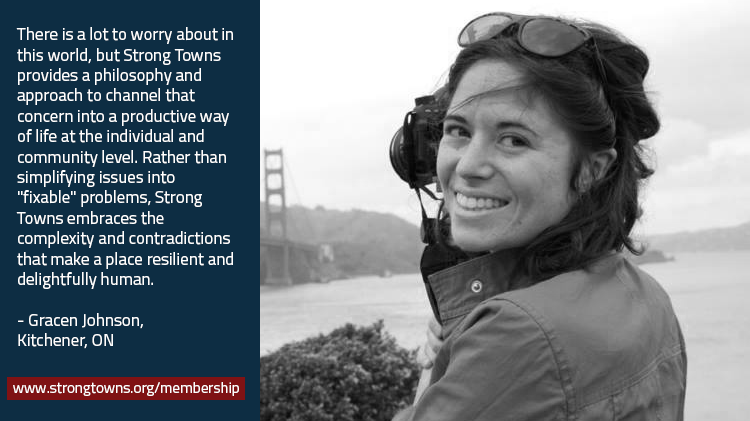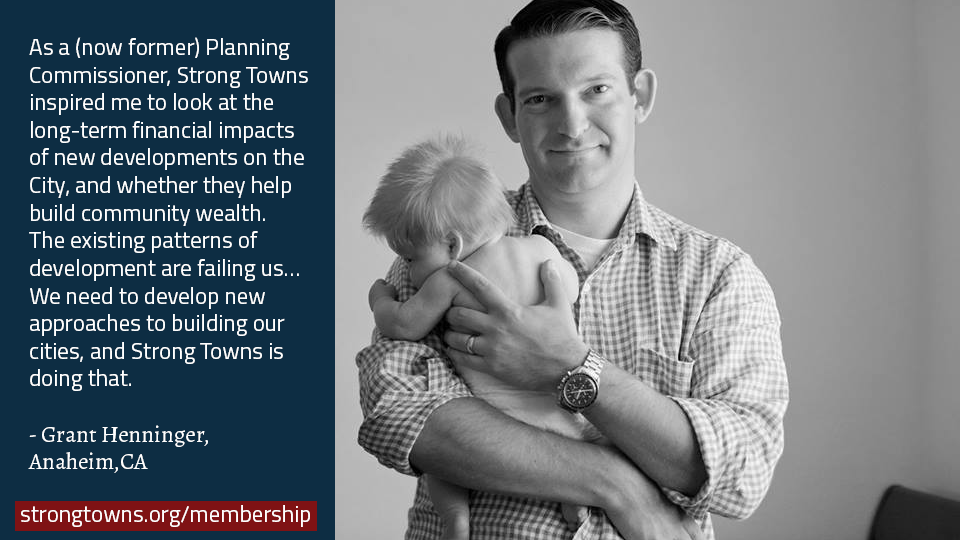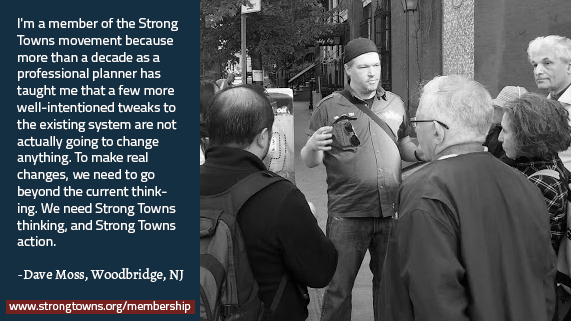How an ethical urbanist plans a running route
My neighborhood.
Over the past few years, I’ve become a wimpy and relatively clueless recreational runner, and I’ve also become more serious about my study of urbanism. Taken together, these two facts mean one thing: I have a really hard time planning a running route.
When I lace up to plod through my four or five miles of St. Louis city streets, I can expect to be distracted by at least a dozen living examples of the kind of urban phenomena we talk about here at Strong Towns every day. From the tax-abated auto-oriented development that’s quietly contributing to our city’s growing debt, to the so-called “blighted” properties that are infinitely more productive (and more than likely, subsidizing the infrastructure underneath the Victorian mansions on the next block), I can’t help but jog through a series of case studies in how to build and not build a city—usually, multiple times before I crack my first mile.
And of course, I’m bound to run into another Strong Towns buzzword: the dreaded stroad.
Oh, do we have stroads.
Believe it or not, also my neighborhood.
If I want to run in any of my neighborhoods’ amazing parks, I have three choices: cross Jefferson Avenue (5 lanes) to the east to get to Lafayette Park. Cross Grand (also 5 lanes) to the west to get to Tower Grove Park. Crossing to the north isn’t an option; highway 44 blocks that.
But the worst stroad is to the south: Gravois, pronounced in true faux-French St. Louis style, like the first syllable of “gravel” followed by the first word of “oy vey.” It’s a whopping 7 lanes wide, including 2 "parking" lanes that people mostly use to pass eachother at insane speeds, and it runs at a diagonal through all of South City. Ironically, the development along From a development perspective, Gravois is still mostly fine-grained: restaurants and old-school sign-making companies that have clung on since the bottom of the city population dropped out in the 50s, vacant apartments sitting over vestigial storefronts.
Via NextSTL
And to get to my favorite running park, I have no choice but to cross it, sprinting faster than my wimpy-runner lungs can reasonably manage at a six way way intersection with almost no permanent crosswalks or pedestrian signals to be found.
But lately, I’ve noticed some changes along Gravois.
On one run, I noticed that they’d repaved it, and men in orange vests were marking the first zebra stripes across those seven treacherous lanes. Then, to my astonishment, the seven lanes became six: bike lane stripes ran up each side of the street, the (utterly useless), a parking lane shorn off to fit them.
Run after run, little by little, I watched my neighborhood change.
And then I read about who had done it: a grassroots citizen planning effort called the Greater Gravois Initiative. They’d gotten a nice write up in our local urban issues blog where they outlined their plan in fascinating detail. They’d written a petition to the city with 78 signatures. They had a facebook page with about 300 likes.
And they had posted a video from Strong Towns.
I live in St. Louis, but I have no idea who ran Greater Gravois Initiative. I certainly had nothing to do with connecting them with Strong Towns; their post is from 2 years ago, and I didn’t find Strong Towns myself until fairly recently. But unbeknownst to me, the organization I work for had already touched my community. Before I knew Strong Towns even existed, never mind taking a job there, its language and ideas were already helping someone make a persuasive argument to our city officials about the streets I walk on--and helping them win. In a small way, Strong Towns was already making my run just a little bit better.
That’s pretty astonishing, right? Now imagine multiply that astonishment by every city and town in America.
We’re not quite there yet. But after this week, I hope you’ve caught just a glimpse of how many strong citizens there are out there, and how many projects like these are helping to quietly make our towns stronger. I hope, like me, you can envision a day when those glimmers shine just a little brighter. And brighter. Until we can see whole towns--and eventually, the whole country--in a whole new light.
Gravois Avenue still isn’t perfect. But I’m confident, with enough strong citizens working together, that maybe it’ll get a little better next time I lace up. Maybe a guerrilla group will throw up some plungers to make the bike lane a protected one, and the city will like the idea and make it permanent. Maybe they’ll extend the sidewalk, and a six lane road will become five. Maybe a planter median will go into the middle, taking it down to four. Maybe we’ll build a train.
There are a lot of organizations out there who will tell you that every little bit you give helps them do their work. I’m going to take it farther: only little bits help.
Whether you’re a college student with just a few dollars a month to give or a career philanthropist who’s ready to write us a check right now to help us grow our team, we can promise you this: Strong Towns will treat your donation, no matter how large or small, as a series of small bets. We will use every single dollar to shine a spotlight on a different city or town across America. We will use every single dollar to reach another person who hasn’t heard our message yet. We will use every bit of your money mindfully, with an eye towards the greatest possible return: a nation, and someday, a world full of people who will grow from that small investment into strong citizens who build strong towns.
It’s the last day of our member drive. If you’ve committed to our movement, we are honored by your support, and thank you for passing the word on. If you’re still on the fence, reach out to me and let’s talk.
And if you're ready? Join us now.








